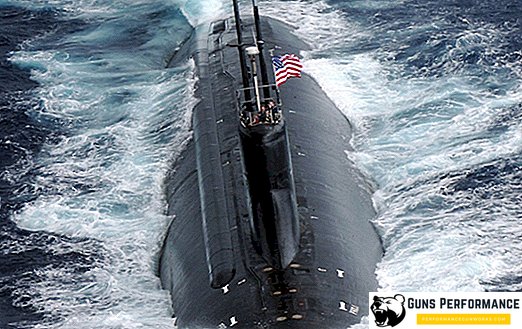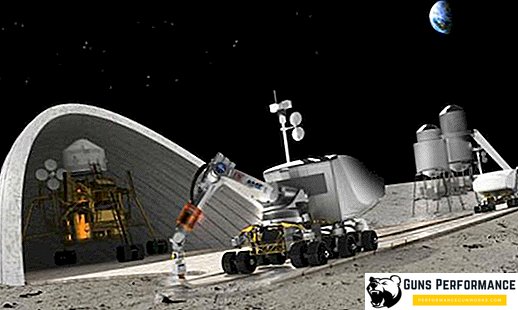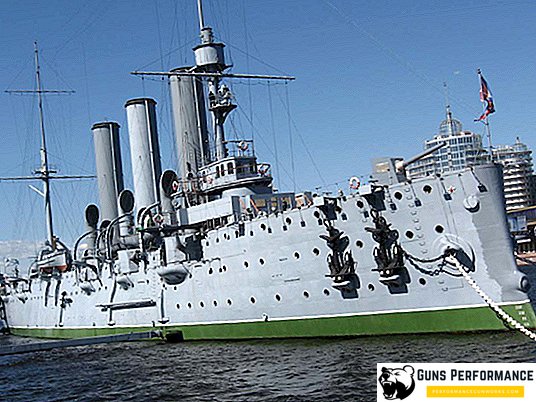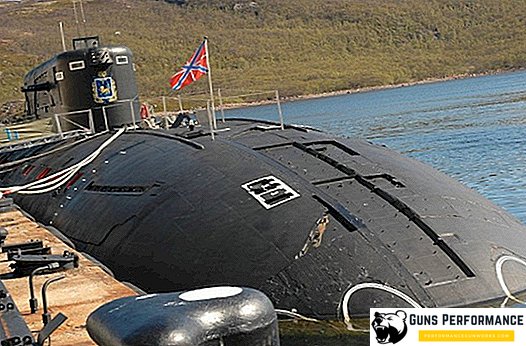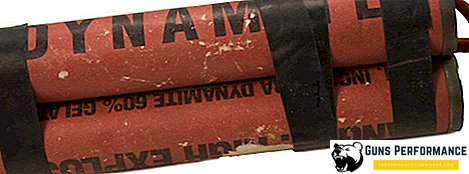
Today the name of Alfred Nobel is known even to children. The famous prize, established by this man, has long been the ultimate dream of any scientist. However, Nobel was better known to his contemporaries not as a patron of arts or a successful businessman, but as a man who invented dynamite. By trading this explosive, Nobel made a huge fortune, which he bequeathed to use to promote outstanding achievements in various fields of science and art. That is how the Nobel Prize appeared.
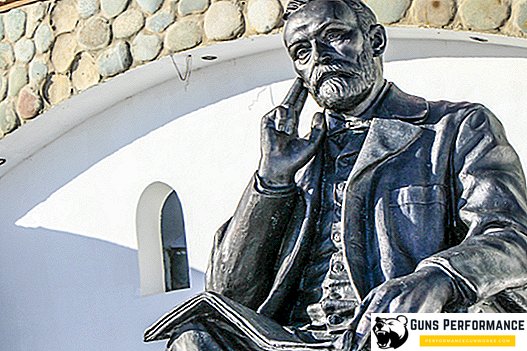
Of all the explosives invented by man, dynamite is probably the most famous and popular. He is widely represented in films, books and computer games, a few Westerns do without a box of dynamite. However, despite this popularity, you are unlikely to succeed in fishing with dynamite today - this explosive is almost never used.
Dynamites became an important milestone in the development of explosive business, they were actively used not only for military needs. They led to a real revolution in mining, significantly increased the efficiency of mining. At the peak of "popularity", dynamite was produced by hundreds of enterprises around the world, the total output reached tens of thousands of tons per year, and the number of produced brands of explosives numbered in the hundreds. Dynamite has gained immense popularity among various terrorist and criminal organizations.
If we talk about the exact definition, then dynamite is an extensive group of powerful blasting explosive mixtures, which are obtained by mixing nitroglycerin with an adsorbent (absorber). In addition to them, in small quantities in the composition of dynamite includes other substances. Such a composition makes this explosive quite stable and safe during transportation and storage. Usually it was pressed into cylindrical briquettes and wrapped in paper or cardboard packaging. The explosion of dynamite was carried out using a blasting cap.
In the USSR, the production of dynamite was stopped in the 60s.
Chemical and physical properties of dynamite
Dynamite is a solid dense substance that has the consistency of ordinary clay. Its density is 1.4-1.5 g / cm3. There are a large number of different types of dynamite, which differ in their chemical composition: the type of adsorbent, the amount of nitroglycerin and additional additives. Accordingly, the basic properties of this explosive are different. Soviet dynamite 62% (composition: nitroglycerin - 62%, colloxylin - 3.5%, sodium nitrate - 35%, wood flour - 2.5%) has the following characteristics:
- flash point - 205 ° C;
- detonation speed - 6 thousand m / s;
- explosion heat - 1210 kcal / kg;
- temperature of explosion products - 1210 kcal / kg;
- the volume of explosion products - 630 l / kg;
- brizantnost - 16 mm.
The TNT equivalent of this explosive is 1.2.
Dynamite is practically insoluble in water, it does not react with metals, it burns well. Burning usually causes an explosion of dynamite. This explosive is not suitable for long-term storage and is very demanding of its conditions. The maximum useful life is one year; it is necessary to save dynamite at a temperature of not more than +22 ° C and not less than +10 ° C, in a well-ventilated room, protected from sunlight.
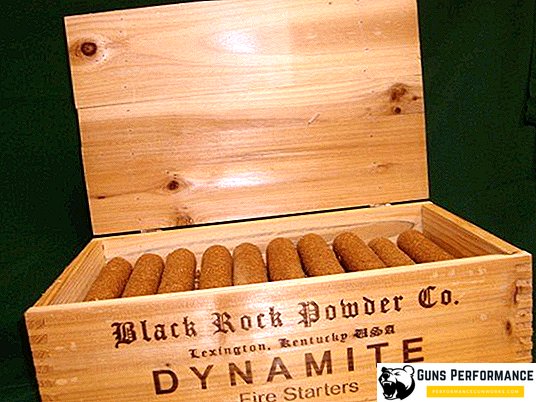
When the temperature drops to +8 ° C, the sensitivity of explosives increases dramatically, but if the thermometer rises to +30 ° C, nitroglycerin starts to be released from it, which is also fraught with the saddest consequences. Frozen dynamite cannot be broken, cut, thrown or subjected to any other mechanical impact - with high probability this can lead to detonation.
The sensitivity of different types of dynamite is different. Soviet 62% dynamite detonates from the impact of a load weighing 2 kg, dropped from a height of 25 cm. High sensitivity is one of the main reasons why dynamite is almost completely abandoned in our time.
Dynamite classification
Dynamite is an explosive which contains nitroglycerin and an absorber (adsorbent). The classification of this type of explosive is based on the amount of nitroglycerin, as well as on the type of adsorbent it contains.
Initially, mixed dynamites (or gur-dynamites) were created, in which various types of inert absorbers were used: magnesium carbonate and kieselguhr. In 1875, Nobel first synthesized gelatinized dynamite, which later became widespread. The composition of gelatin-dynamite includes a colloidal solution of nitrocellulose in nitroglycerin, any oxidizing agent (potassium, sodium or calcium nitrate), a combustible additive (for example, wood flour) and a stabilizer.
The most famous type of gelatin-dynamite is the so-called explosive jelly - a truly hellish mixture with a detonation speed of 8 thousand m / s and a heat of explosion of 1550 kcal / kg. However, this substance is so unstable and explosive that it has not been used for a long time. With the help of explosive jelly, the Russian Emperor Alexander II was killed by revolutionary revolutionaries.
Depending on the content of nitroglycerin, dynamites are divided into high and low interest. The bigger it is, the more powerful the explosive. The most widespread are 40-60% dynamites; in the USSR, explosives with a nitroglycerin content of 62% were most actively used.
The composition of dynamites usually depended on their purpose. For example, explosives in coal mines used explosives with a low level of nitroglycerin (from 10 to 40%), as well as containing a significant amount of additives to reduce the temperature of the explosion. This composition was necessary to prevent the detonation of methane and coal dust in the faces.

Gelatin-dynamite with a high content of nitroglycerin (up to 90%) was used for blasting in extremely hard soils. The so-called military dynamites contained additives that reduce their sensitivity to mechanical stress. Usually it was camphor or petroleum jelly. For work in the northern latitudes, the so-called hard-frosting dynamite, which included nitroglycols, was produced. It froze at −20 ° C.
Who and when invented dynamite?
For over a thousand years, man knew only one type of explosive - black powder. And this seriously hampered progress: after all, explosives are needed not only in war, with its help they pave tunnels in rocks, crush rocks and extract minerals. The rapid development of chemistry and other exact sciences allowed scientists at the end of the XVIII century to obtain picric acid and volatile mercury. However, the real turning point in the development of explosives was the year 1846, when European chemists immediately discovered two types of powerful explosives - nitroglycerin and nitrocellulose. The first substance "gave" the world nitroglycerin powder and dynamite, and the second - pyroxylin and pyroxylin powder.
Nitroglycerin was a powerful explosive with excellent blasting properties. In addition, the products of the explosion of this substance were harmless to humans. All this made nitroglycerin almost an ideal candidate for use during underground blasting. However, there was a huge fly in the ointment of honey: the highest sensitivity made working with this type of explosive simply impossible. Nitroglycerin detonated from the slightest mechanical effects, sometimes an explosion occurred and for no apparent reason whatsoever. After a number of accidents with a large number of victims, work with nitroglycerin was prohibited. Chemists had to either learn to "manage" this explosive, or completely abandon its use.
In 1864, the first Nobel factory for the production of nitroglycerin just flew into the air. Five people were killed, including the younger brother of a chemist, who at that time was not yet twenty years old.
According to a popular legend, dynamite was invented by chance. Supposedly Nobel transported nitroglycerin in bottles, one of which gave a leak, and the substance got on kieselgur (this is a mountain sedimentary rock). Then the inventor paid attention to him.

In fact, Nobel for a long time studied various absorbent materials and their interaction with nitroglycerin. Kizelgur showed the best results, after which the scientist perfected the production technology of new explosives for several years, and in 1866 presented it to the world.
The discovery of dynamite made it possible to completely abandon the use of nitroglycerin in its pure form. New explosives were much safer, contemporaries almost immediately evaluated the invention.
In 1867, Nobel proposed the use of dynamite to equip shells, but this idea was rejected by the military because of the high danger to its own soldiers.
In just a few years, dynamite production has grown from tens to several thousand tons per year. This explosive was actively used by both sides of the conflict during the Franco-Prussian war.
In 1875, Nobel discovered the method of gelatinization of dynamite, which has been industrialized since 1878. These explosives were actively used during the construction of tunnels across the Alps, it was the new dynamite that made it possible to complete the work several years earlier. An important advantage of this explosive was that it was not afraid of water, so an explosion of dynamite could also be used in underwater operations.

Before starting work on gelatin-dynamite, Nobel rewrote his will. This fact gives a clear idea of how dangerous work with nitroglycerin was.
There were attempts to create new types of powders on the basis of dynamite, but they were not crowned with success. In general, it should be noted that this explosive did not find itself in military affairs, because it was very sensitive to external influences.
The heyday of the use of dynamites fell on the 20s of the last century. At this time in the world every year produced hundreds of thousands of tons of this explosive. In some countries, dynamite remained the main type of industrial explosives until the middle of the last century. However, gradually this type of explosives began to be supplanted by nitrate-based explosives.
Dynamites are still being produced today, but their share in the global production of explosives is negligible.



